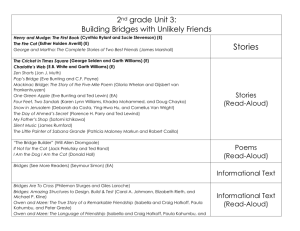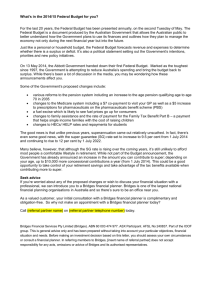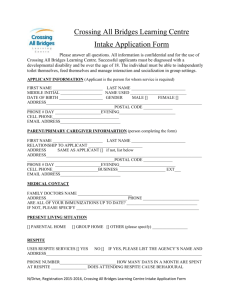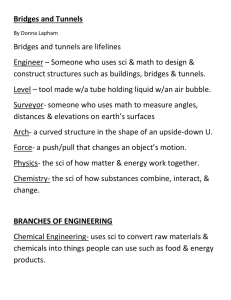Problem 2 – Bridges
advertisement
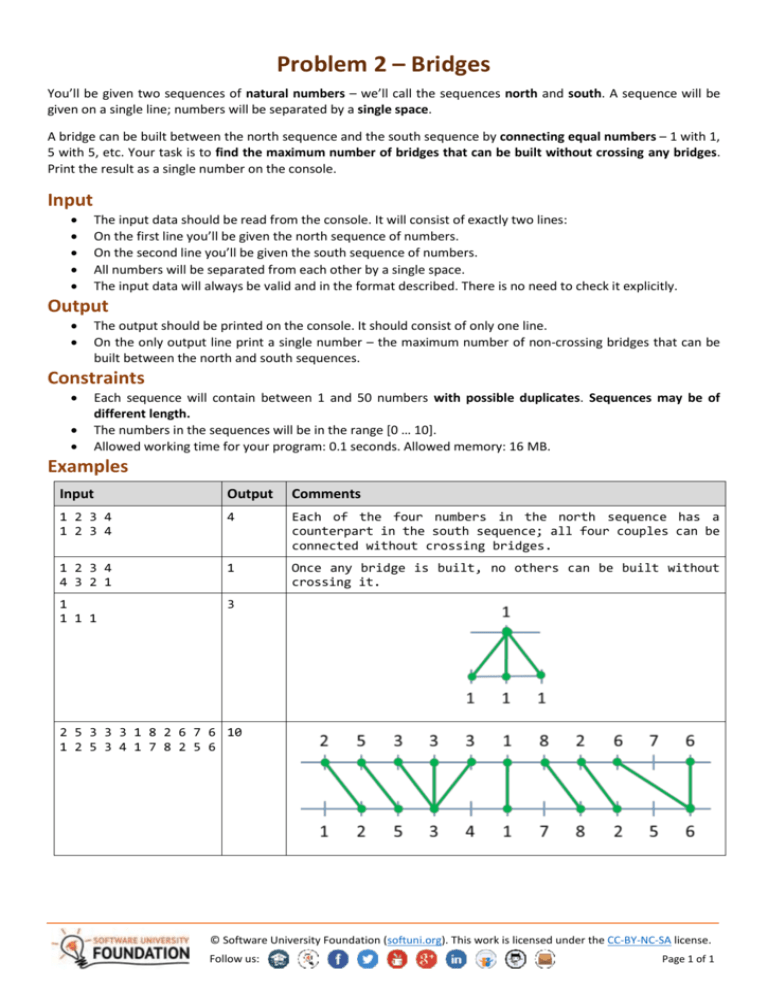
Problem 2 – Bridges You’ll be given two sequences of natural numbers – we’ll call the sequences north and south. A sequence will be given on a single line; numbers will be separated by a single space. A bridge can be built between the north sequence and the south sequence by connecting equal numbers – 1 with 1, 5 with 5, etc. Your task is to find the maximum number of bridges that can be built without crossing any bridges. Print the result as a single number on the console. Input The input data should be read from the console. It will consist of exactly two lines: On the first line you’ll be given the north sequence of numbers. On the second line you’ll be given the south sequence of numbers. All numbers will be separated from each other by a single space. The input data will always be valid and in the format described. There is no need to check it explicitly. Output The output should be printed on the console. It should consist of only one line. On the only output line print a single number – the maximum number of non-crossing bridges that can be built between the north and south sequences. Constraints Each sequence will contain between 1 and 50 numbers with possible duplicates. Sequences may be of different length. The numbers in the sequences will be in the range [0 … 10]. Allowed working time for your program: 0.1 seconds. Allowed memory: 16 MB. Examples Input Output Comments 1 2 3 4 1 2 3 4 4 Each of the four numbers in the north sequence has a counterpart in the south sequence; all four couples can be connected without crossing bridges. 1 2 3 4 4 3 2 1 1 Once any bridge is built, no others can be built without crossing it. 1 1 1 1 3 2 5 3 3 3 1 8 2 6 7 6 10 1 2 5 3 4 1 7 8 2 5 6 © Software University Foundation (softuni.org). This work is licensed under the CC-BY-NC-SA license. Follow us: Page 1 of 1

